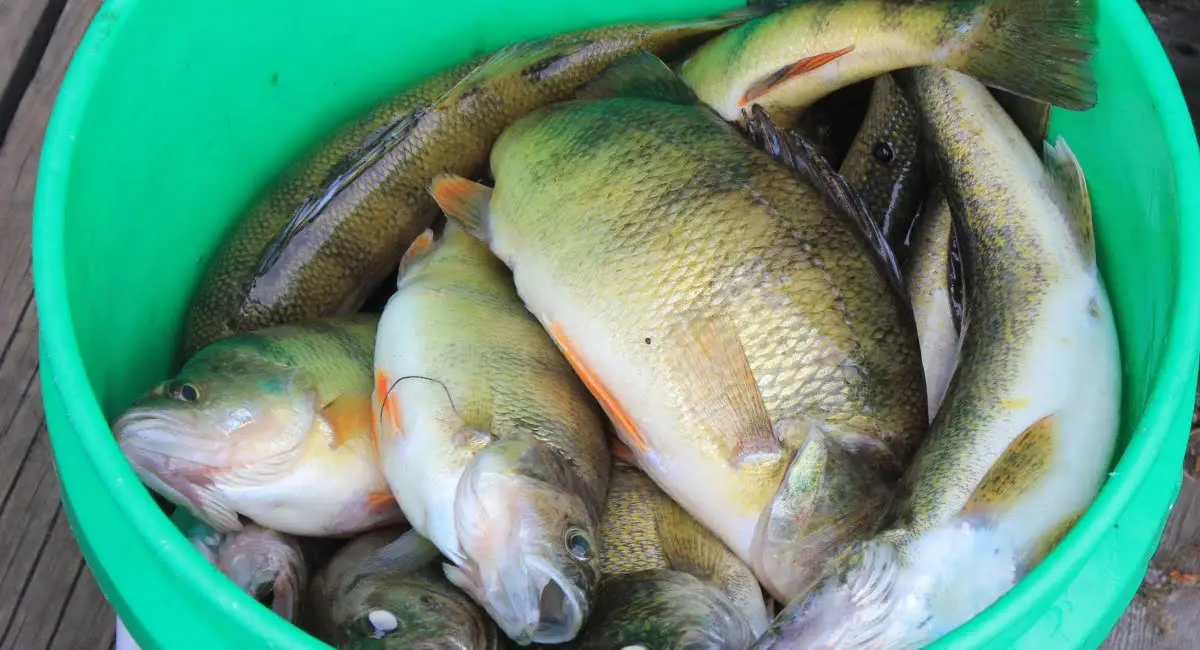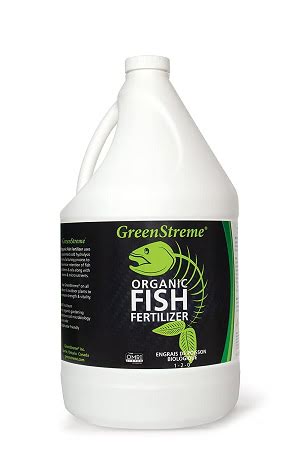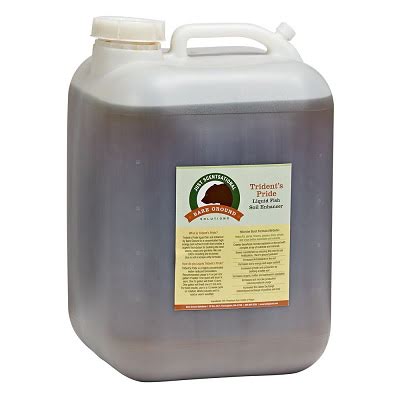Fish as fertilizer in your garden what you need to know
Do Fish Make A Good Fertilizer?

Fish can work as a plant fertilizer and is a nutrient-rich natural organic source of nutrients for farmers and gardeners. It is an easy way to provide our plants with vitamins, amino acids, proteins, and more.
The are 3 types of fish fertilizers (meal, emulsion, and hydrolysate), and we will discuss all three. They have different N.P.K. ratios.
They are rich in nitrogen, phosphorus, and potassium and contain many trace elements like calcium, magnesium, sulfur, chlorine, and sodium.[4]
The oil from the fish does not help the plants directly but feeds the soil microbes allowing them to break it down into a useable form for our plants and helping to aerate the soil.
As you might expect, there will be somewhat of a fishy smell that will fade quickly. I will only use this outside and use something like an algae fertilizer for my indoor garden.
Using fish as a nutrient source for our soils is nothing new. The Native Americans have used this method for centuries, placing small fish in the ground as a soil preparation where they would grow their corn.
It also dates back to ancient Egypt and pre-Columbian societies burying fish to also help improve their crops.
Types Of Fish Fertilizer
The three primary types of fish fertilizer currently in use: are fish meal, fish emulsion, and hydrolysate.
Fish Meal Fertilizer

Fish meal is a brown powder with a high protein level and appreciable quantities of lipid and minerals.[1] It is the only available form of fish fertilizer that is in solid form.
It is a slow-release fertilizer (like many organic fertilizers) buried at the root zone and helps mainly with vegetative growth.
It is common for phosphorus to get added to help stabilize and deodorize the final product.
The fish get heated, pressed, and dried, and the fats and oil are removed from the final product.
Fish meal npk: 8-6-0
Fish Emulsion Fertilizer

Fish emulsion is a fertilizer created from the fluid remains of fish processed for fish oil and fish meal. Fish emulsion is by far the most commonly used.
Being in a liquid form, it is a fast-acting organic fertilizer.
Fish emulsion is a thick concentrate that you must mix with water before applying it to your garden.
Fish emulsion npk: 4-1-1 or 5-1-1, depending on the brand
The mixture gets finely grounded, dried, and processed, helping to reduce the fishy odor.
Phosphoric or sulfuric acid is often added to help lower the pH level and stop microbes from growing.
While it has lower nutrient levels than the other liquid form of fish fertilizer, it also costs less.
Fish emulsion can be applied to the soil and work as a foliar spray, and either type of application requires you to mix it with water first.
Fish Hydrolysate Fertilizer

Fish hydrolysate fertilizer is not actually fish emulsion. The fish are enzymatically cold-pressed.
This process keeps the oils, amino acids, vitamins, hormones, and enzymes intact within the product. Resulting in a nutrient-rich concentrate.
Hydrolysate fertilizer can be used as a foliar spray, but the fats within it can not be used by the plant. The oil works best in the soil, where organisms can break it down into a useable form for plants.
Fish Hydrolysate npk: 8-7-7
D.I.Y. Fish Emulsion
Method one
The easiest method to improve your crops by using fish as a fertilizer is simply cutting up the unused portion of fish and burying it about a foot deep in the soil.
Method two will show you how to process the fish and make a better form for your garden. But it has many more steps, and you will have a bucket of rotting fish around for some time.
It is always best to bury it a little deeper to ensure neighborhood pets don't come tearing up your garden looking for it. The following method significantly reduces the chance of any neighborhood pests from cooming and digging up your garden.
Method Two
This is going to smell significantly stronger than commercially available options. They use a process known as hydrolyzing. That is using natural enzymes to break down the material instead of heat.
You will want to wear clothes that are unimportant to you and definitely have on some rubber gloves when doing this.
- 1) Get a five-quart bucket and place chopped-up fish mixed in with leaves. (this bucket will never smell properly again, so you should use a dedicated bucket.)
- 2) Slowly add more fish and organic matter, mixing well, making sure the fish and leaves/grass are thoroughly mixed together.
- 3) Continue adding fish and organic matter until the bucket is between two-thirds to three-quarters full.
- 4) The last layer added to the bucket should be just cut-up fish and no leaves.
- 1) Add water, brown sugar(about the same amount as fish added), or molasses. The sugars feed the microorganisms, leaving about three inches of room from the water to the top of the bucket. We need the space at the top of the bucket for the gasses that will get released. The gas can make the lid pop off if there is not enough room at the top.
- 2) Put the lid on top, making a tight seal, and put the bucket in a warm spot. The warmer the area, the faster the process will happen.
- 3) Check it each day for the first 12 days, and then every few days to see if the gas is building up. When you notice gasses begin to form, you should stir the mixture. Do not go long without checking it. If too much gas builds up, the bucket's lid can pop off and cause a nasty mess you will have to clean.
- 4) The fermenting process can take anywhere from one to three months to finish and provide a usable fertilizer. The cooler the area, the longer the process will take.
- 1) Now strain the liquid through a fine mesh screen. We want to only collect the liquid from within the bucket, not the fish and plant matter. Place the strained liquid into sealable bottles.
- 2) To use the fertilizer, add about 5 ounces of the emulsion into one gallon(four liters) of water and water into your garden.
- 3) You can now add more water and repeat the steps outlined above. You should be able to refill the bucket a total of 3 times to get as much fertilizer out of it as possible. It's important to remember that the fertilizer will be weaker every time you repeat this process.
Conclusion
When adding fish fertilizer to your garden, you can choose from the three types available in stores.
Depending on the type, it will work as a fast-acting fertilizer or slow release.
Leftover fish and the unusable parts make for a perfect fertilizer and have been used for centuries.
It is a great organic way to help feed the health of our soil and improve its microbial activity while reducing our waste.
If you do not want to deal with making it yourself, most garden centers carry at least one type. The smell of commercially produced fertilizer is generally not as strong as the homemade version.
Similar Articles
Algae as Fertilizer
Everything About Superphosphate Fertilizer
Advantages Biofertilizer What It Is
What You Should Know About Mushroom Compost
[1]https://www.sciencedirect.com/topics/agricultural-and-biological-sciences/fish-meal
[2]https://www.gardenerspantry.ca/product/liquid-fish-fertilizer
[3]https://fishmeal.co/2020/11/07/fishmeal-in-fertilizer-industry
[4]https://www.gardeningknowhow.com/garden-how-to/soil-fertilizers/using-fish-emulsion.htm
[5]https://groundtoground.org/2011/09/09/fertilizing-your-garden-with-fish
[6]https://www.homequestionsanswered.com/what-is-fish-fertilizer
[7]https://fertilizerhub.com/beginners/what-is-fish-fertilizer
[8]https://www.indoorplantsforbeginners.com/is-fish-fertilizer-good-for-plants
[9]https://www.epicgardening.com/fish-fertilizer